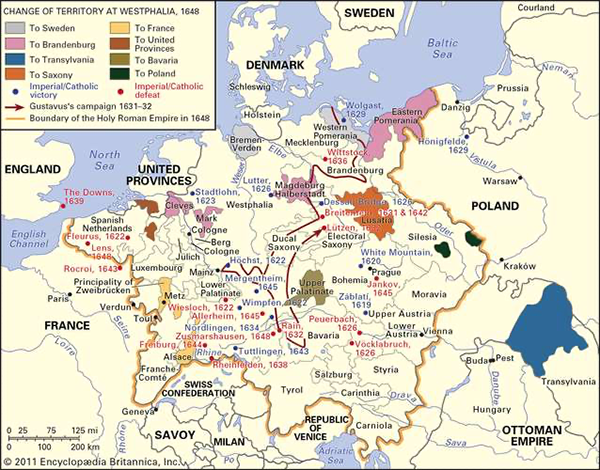The Peace of Westphalia: Ending the Thirty Years War
Part 2: A Peace to End the Bloody War Discussions about ending the war had begun while the fighting was still raging. The Peace of Prague in 1635 had briefly ended the fighting; as well, other short-term truces had stopped the conflict but only for awhile. Representatives of France and the Holy Roman Empire had met in Cologne as early as 1641. Thousands of people representing 194 states had gathered in Münster and Osnabrück, in the German province of Westphalia, as early as December 1644. The presiding officers were Fabio Chigi, the Papal Nuncio, and the Venetian ambassador, Alvise Contarini. Representatives of Sweden and its allies preferred Osnabrück because it was in Protestant hands, and so that country's negotiations with the Holy Roman Empire took place in the city; France took a leading role in the other negotiations and preferred Münster, which was in Catholic hands. As did the war, the peace negotiations crept along. The attendees spent the first six months arguing about pride of place at the negotiating table and even in what order the envoys would enter a room. All the while, messengers carried peace draft proposals from place to place, not only on the grounds of where the negotiations were taking place but also to Paris or Vienna or Madrid or other state capitals, to be read and responded to by monarchs or their representatives. Another complication was that representatives came and went at various times and that many discussions took place effectively in isolation because they occurred at different points in time. In truth, never did all representatives meet in one place at one time. Representatives signed peace treaties at Münster and Osnabrück on Oct. 24, 1648. These treaties did not cover the war between France and Spain, which continued, albeit at a more relaxed pace for a time. As well, Spain and the Dutch Provinces had signed a treaty ending the Eighty Years War on Jan. 30, 1648. The treaties did sort out some difficult issues that had either caused the war or resulted from its prosecution:
In political terms, France and Spain remained at either end of the power spectrum in Europe (and, in fact, were still at war). Losing the most in terms of territory and influence was the Holy Roman Empire. The Peace of Westphalia set the boundaries of many European countries and kingdoms; many of those boundaries remained unchanged for more than a century.  First page > A War of Religion and Politics > Page 1, 2 |
|
Social Studies for Kids
copyright 2002–2025
David White



 Each state had exclusive sovereignty over its own land and people. A perceived balance of power was to hold aggressor states in check. Each state, regardless of amount of territory or population, was equal under international law.
Each state had exclusive sovereignty over its own land and people. A perceived balance of power was to hold aggressor states in check. Each state, regardless of amount of territory or population, was equal under international law.
